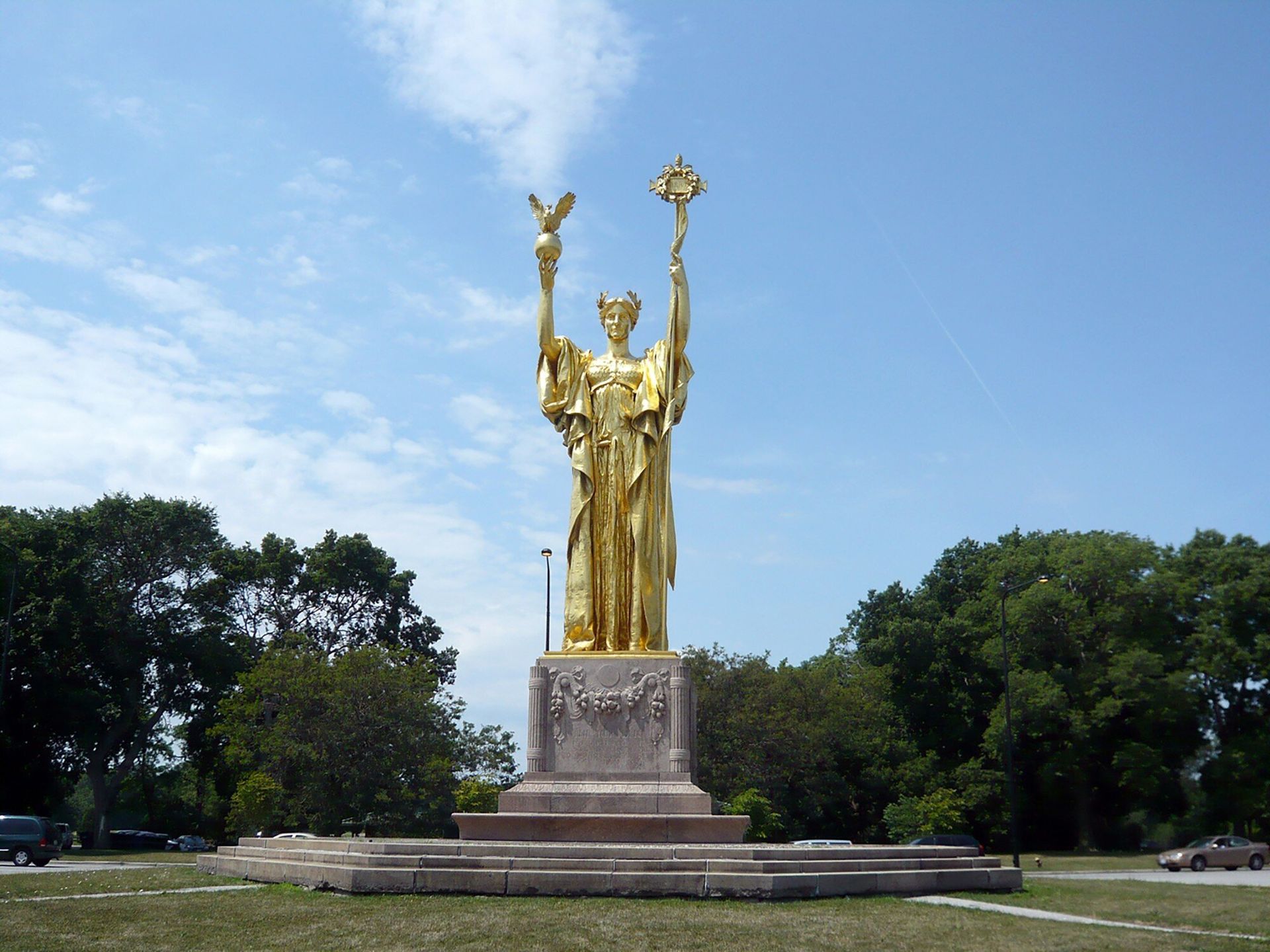

World’s Columbian Exposition of 1893
This year marks the 125th anniversary of the “White City,” the first world’s fair held in Chicago. The fair ran in Jackson Park on the city’s South Side, drawing in more than 27 million visitors over its six-month run.
This year marks the 125th anniversary of the “White City,” the first world’s fair held in Chicago. The fair ran in Jackson Park on the city’s South Side, drawing in more than 27 million visitors over its six-month run.
by Ellen Shubart, CAC docent
Held in celebration of the 400th anniversary of Christopher Columbus’s arrival in America, the fair was a stage for the world’s newest inventions, innovations and ideas. Here are a few fun facts about the fair.
1. THE FAIR CHANGED FOOD
Often called “the fair that changed Chicago,” the World’s Columbian Exposition of 1893 gave us many foods and drinks that are still popular today. Snacks like Juicy Fruit gum, Cracker Jack and brownies all trace their origins back to the fair. The beef sausage that would become the foundation of the Chicago-style hot dog also made its appearance at the White City. Even Pabst beer has claimed its roots stem back to the exposition, where the company won its namesake blue ribbon.
2. CIVIC BUILDINGS NATIONWIDE MIMICKED THE FAIR’S BEAUX ARTS STYLE
The chief architect of the fair Daniel Burnham chose the Beaux Arts architectural style for the fair’s main buildings. Beaux Arts design is characterized by classical details like columns and pediments, highly decorative surfaces, statues, symmetry and the use of stone. Burnham’s choice of style influenced architecture in the United States for several decades. Many turn-of-the-century towns’ city halls, libraries and courthouses look very similar to the buildings at the World’s Fair.
3. IT WAS A WIN FOR WOMEN’S RIGHTS
Long before the suffragettes won the right to vote, Chicago socialite Bertha Honoré Palmer fought for women to have a seat at the World’s Fair table. Palmer—of Palmer House Hotel fame—was the chair of the Board of Lady Managers, the first governing body of its kind. The board was instrumental in establishing the Woman's Building at the Fair, which was designed by one of America’s first female architects: MIT graduate Sophia Hayden. The Woman’s Building featured arts, crafts and murals created by women.
4. FERRIS WHO? CHICAGO WAS ALMOST HOME TO A BIGGER EIFFEL TOWER.
At the 1889 World’s Fair in Paris, Gustave Eiffel unveiled his signature tower that soon became a worldwide sensation. When the Chicago World’s Fair committee began to plan the exposition, it asked U.S. architects to design a structure that would “out-Eiffel, Eiffel.” The initial proposals the committee received included what would have been the modern world’s first bungee jump and a 1,500-foot tower made entirely of logs. Gustave Eiffel even offered to build a tower similar to his Parisian masterpiece, but considerably larger. The committee seriously considered Eiffel’s offer, but the U.S. engineering community insisted an American design the structure. It chose Pittsburgh engineer George Washington Ferris’s design—the Ferris Wheel.
5. RAILWAYS, RICHES AND RESILIENCE: THE FAIR HAD IT ALL
Several cities competed to host the Columbian Exposition of 1893. In addition to Chicago, New York City, Washington, D.C. and St. Louis all threw their hats in the ring. All four cities made strong cases, especially Washington, D.C. as the seat of our government and New York as the nation’s largest city. So how did Chicago edge out the competition? Congress cited several reasons for their choice, including Chicago’s extensive railway system, its central location and its citizens’ fundraising efforts, which totaled more than $5 million. But there was another factor at play: Chicago’s tenacity. While New York boasted its logistical capabilities, Chicago touted its resilience. Our city had risen from the ashes of a debilitating fire to become a symbol of America’s aspirations—an energetic, brash growing metropolis where anything was possible.
